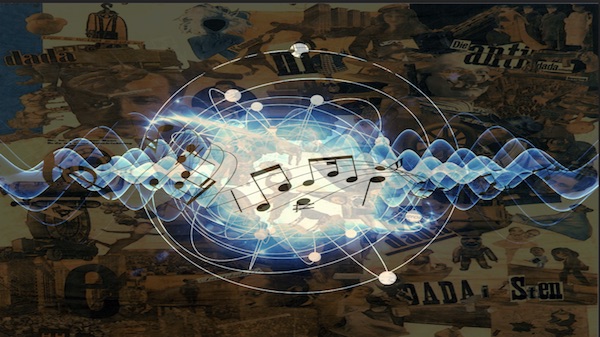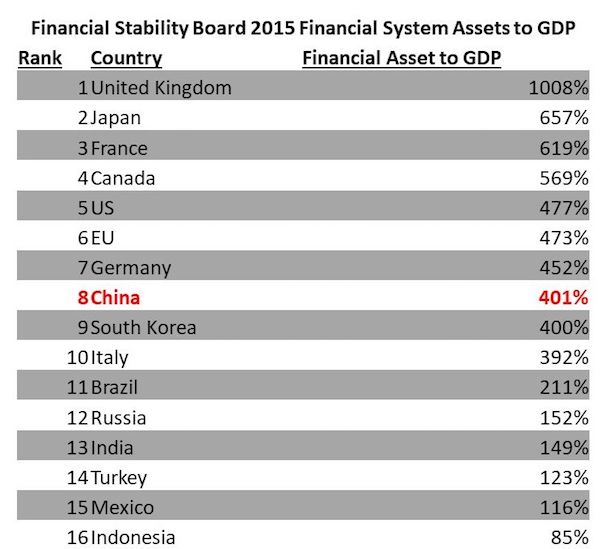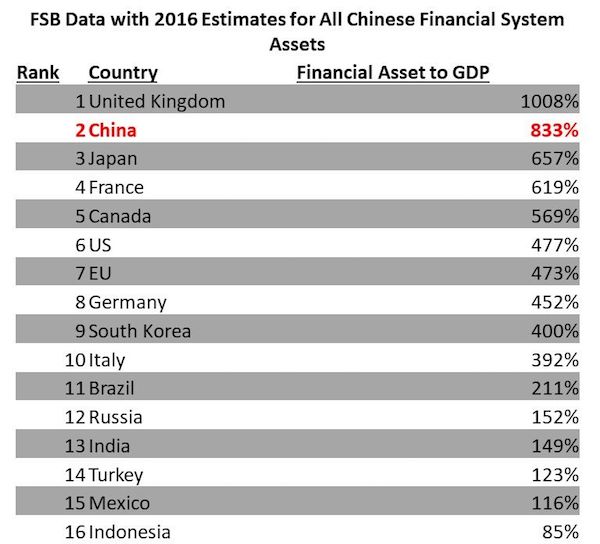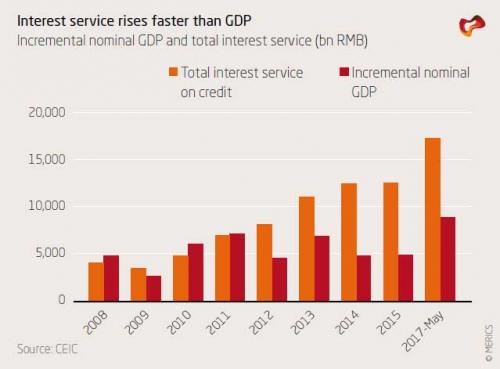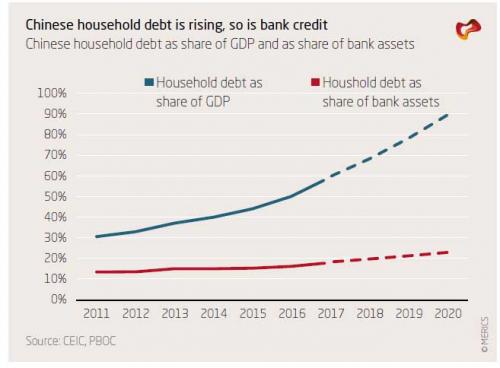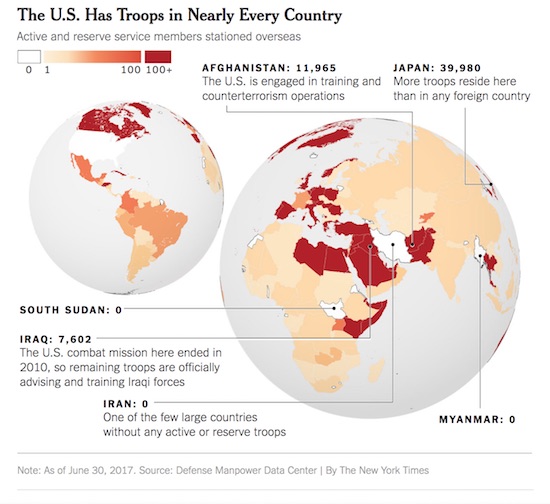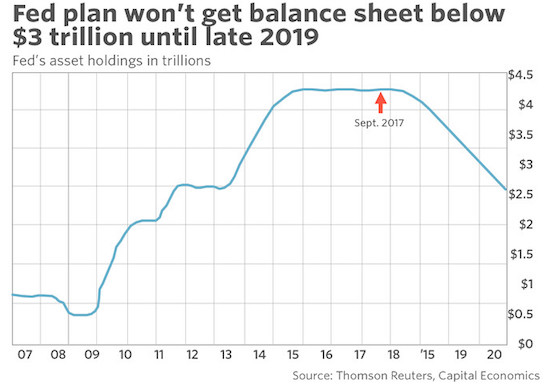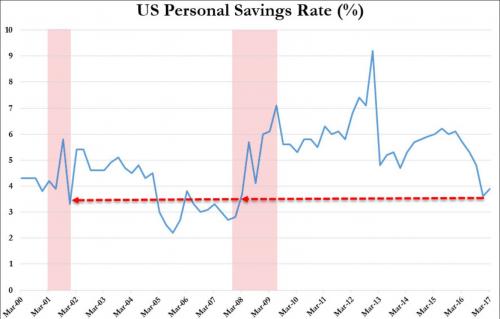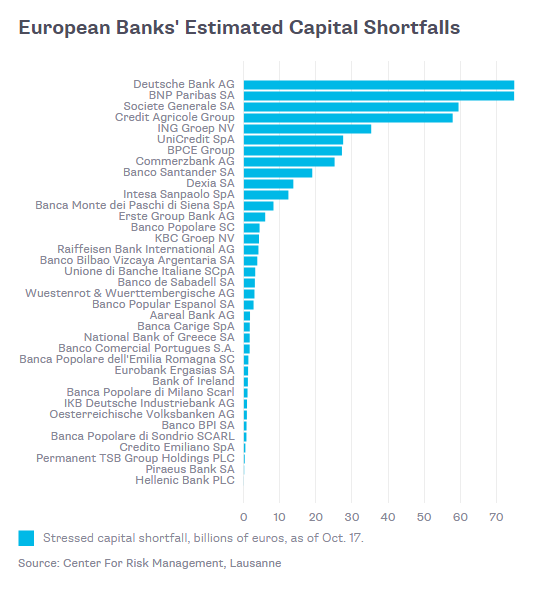
James Ensor The oyster eater 1882



Delivery
https://twitter.com/21WIRE/status/1901254646326292531
Ad
President Trump's new ad…
Bigger that Watergate.mgshowchannel pic.twitter.com/wZHyIunwSW
— Jack Straw (@JackStr42679640) March 16, 2025
Ursula
When you can’t tell the difference between characters in a dystopian SiFi movie and real life. pic.twitter.com/hgGqCcthIe
— Edward Dowd (@DowdEdward) March 16, 2025
Brussels
ELON: THE EU HEADQUARTERS ARE A GIANT CATHEDRAL TO BUREAUCRACY
“Europe actually has more bureaucracy than the US does because you don't just have the provincial and sort of national level, you also have the EU on top of that.
To be totally frank, the EU headquarters in… pic.twitter.com/IWtuqTrkP2
— Mario Nawfal (@MarioNawfal) March 16, 2025
Butler
Joe Rogan and Elon Musk point out the INSANE details surrounding the Butler, Pennsylvania Donald Trump assassination attempt shooter
– The assassins house was PROFESSIONALLY scrubbed
– His home was scrubbed so well there wasn’t even silverware left in the home
– No footprint on… pic.twitter.com/1qywOJpK2Q— Wall Street Apes (@WallStreetApes) March 16, 2025
Sacks
NEW – David Sacks Exposes Real Reason Swamp Dems Are Hysterical About Musk’s DOGE Cuts |
“Then it hit me, they actually have come to believe that this taxpayer money is theirs and by returning it to the Treasury, Elon is stealing from them.”
David Sacks just nailed the swamp’s… pic.twitter.com/zv8mUDJEyI
— Overton (@overton_news) March 16, 2025


Guess this judge falls under lawfare. Every move the government wants to make, can trigger a court case. That makes the land ungovernable.
“They were already outside of US airspace. We believe the order is not applicable..”
“This is headed to the Supreme Court. And we’re going to win..”
• White House Ignores Activist Judge, Deports Plane Full Of Criminals (ZH)
Update (2112ET): The Trump administration says it disregarded a judge’s order to turn around two planeloads of Venezuelan criminals because the flights were over international waters and therefore the ruling did not apply, Axios reports, citing two senior officials – one of whom made clear that it’s “Very important that people understand we are not actively defying court orders.”The Trump administration argues that US District Judge James Boasberg overstepped his authority when he issued an order blocking the president from deporting roughly 250 alleged Tren de Aragua gang members under the Alien Enemies Act of 1789, a wartime law that gives the executive branch immense power to deport noncitizens without judicial hearings.
“This is headed to the Supreme Court. And we’re going to win,” a senior White House official told Axios, adding “It’s the showdown that was always going to happen between the two branches of government.” “And it seemed that this was pretty clean. You have Venezuelan gang members … These are bad guys, as the president would say.” Axios then cites Democrat attorney Mark S. Zaid……who posted on X “Court order defied. First of many as I’ve been warning and start of true constitutional crisis,” adding that it could eventually lead to another Trump impeachment, according to Axios. According to the report, White House Deputy Chief of Staff Stephen Miller “orchestrated” the flights in the West Wing in tandem with DHS Secretary Kristy Noem.
More via Axios:The timeline: The president signed the executive order invoking the Alien Enemies Act on Friday night, but intentionally did not advertise it. On Saturday morning, word of the order leaked, officials said, prompting a mad scramble to get planes in the air. At 2:31 p.m. Saturday, an immigration activist who tracks deportation flights, posted on X that “TWO HIGHLY UNUSUAL ICE flights” were departing from Texas to El Salvador, which had agreed to accept Venezuelan gang members deported from the U.S. Hours later, during a court hearing filed by the ACLU., Boasberg ordered a halt to the deportations and said any flights should be turned around mid-air. “This is something that you need to make sure is complied with immediately,” he told the Justice Department, according to the Washington Post. At that point, about 6:51 p.m., both flights were off the Yucatan Peninsula, according to flight paths posted on X.
An internal discussion was had in the White House as to whether they should order the planes to turn around – only to press ahead per administration lawyers. “There was a discussion about how far the judge’s ruling can go under the circumstances and over international waters and, on advice of counsel, we proceeded with deporting these thugs,” said the senior official. “They were already outside of US airspace. We believe the order is not applicable,” said the other official.

1/ Ceasefire plan, which looks dead right now.
2/ Surrender of troops in Kursk region.
• Trump Plans To Speak With Putin On March 18 (RT)
US President Donald Trump has announced that he expects to hold a phone conversation with his Russian counterpart, Vladimir Putin, on Tuesday to discuss the prospects of a peace agreement in the Ukraine conflict. Speaking to reporters aboard Air Force One on Sunday, Trump said he plans to speak with Putin on March 18, according to the AP. “We will see if we have something to announce maybe by Tuesday. I will be speaking to President Putin on Tuesday. A lot of work’s been done over the weekend. We want to see if we can bring that war to an end. We will be talking about land. We will be talking about power plants,” Trump was quoted as saying.
US special envoy Steve Witkoff previously stated that Trump and Putin were expected to hold a telephone conversation this week to discuss efforts toward establishing a ceasefire in the Ukraine conflict. Witkoff, who recently met with Putin in Moscow, described the discussions as “positive” and indicated that both Russian and Ukrainian parties are now “a lot closer” in negotiations. “I expect that there’ll be a call with both presidents this week, and we’re also continuing to engage and have conversations with the Ukrainians,” Witkoff said. On Saturday, US Secretary of State Marco Rubio held a separate phone call with Russian Foreign Minister Sergey Lavrov, during which the two top diplomats discussed further steps to reestablish direct communication between their countries.
The first formal telephone conversation between the Russian and US leaders in years took place on February 12, 2025. It was followed by high-level talks in Saudi Arabia on February 18, where Washington and Moscow agreed to assign teams to work on resolving the Ukraine conflict, restore embassy operations, and address other points of contention in bilateral relations. Since then, additional discussions have been held in Istanbul, focusing on diplomatic funding and a proposal from Moscow to reinstate direct flights.
Following negotiations in Jeddah last week, Ukraine agreed to a 30-day ceasefire. Shortly after, Witkoff traveled to Moscow on Thursday to present Putin with the details of the proposal. The Russian president welcomed the ceasefire in principle but insisted on addressing several key issues first, including the fate of Ukrainian troops encircled in Russia’s Kursk Region. While the details of Witkoff’s meeting with Putin have not been made public, Trump hinted at progress, stating that the White House had received “some pretty good news” regarding the ceasefire efforts and that US-Russia meetings over the past several days had been “very productive.”

Constantin von Hoffmeister.
“This is why the West cannot win in Ukraine. It fights as a bureaucratic entity, not as a people. And Russia, for all its flaws, fights as a people.”
• The West Lives In A Simulation While Russia Is Shaping The Real World (CvH)
The conflict in Ukraine is not about Ukraine. It is the West’s last delirious attempt to exert control over a world that no longer needs it. The West, lost in the labyrinth of its own technocratic nightmare, flails like a dying beast, mechanized and blind. The German historical philosopher Oswald Spengler (1880-1936), in ‘Man and Technics’ (1931), wrote of the Faustian civilization’s ultimate downfall, where technology, once an extension of organic culture, becomes an iron cage, trapping its creators in a world they no longer understand. The Western response to Ukraine is precisely this: Drones, sanctions, media narratives manufactured in real-time, an illusion of omnipotence maintained by algorithms, and artificial intelligence. But reality is slipping through the cracks. The more the West mechanizes, the more it loses its ability to perceive the living, breathing cultures it seeks to control.
A ceasefire? A negotiation? The West proposes them like a bureaucrat offering a new tax code, as if war were a spreadsheet that could be adjusted to fit quarterly projections. US President Donald Trump’s emissaries meet with Russian officials, not because they believe in peace but because the old America – his America – has sensed the shift. A world order of raw power is replacing the West’s dream of digital hegemony, and Russia, China, and a thousand-year-old history stand against it. Spengler saw it coming: The machines would overtake the soul, and the West would become incapable of organic thought. This is why they cannot understand Russia – not because they lack intelligence, but because their intelligence has been reduced to an algorithmic process, stripped of cultural depth. The West is thinking in the way that a machine thinks, and Russia, still a creature of history, is thinking like an empire.
Russian President Vladimir Putin dismisses the ceasefire offer because he knows it is a mirage. He speaks of root causes, of history, of a world that is not reducible to transactions and diplomatic maneuvers. The West recoils in horror. This is the fundamental difference: Russia still understands what war means, while the West sees only an endless data stream of casualties, arms shipments, and strategic objectives. Spengler called this the tragic turn of Faustian civilization – when man, having created his machines, no longer controls them. The West does not wage war for power or territory but to maintain the facade that it is still in control. War as process. War as algorithm. The end goal is never victory, only perpetual management of crises.
Meanwhile, the financial technocrats of the G7 conjure $50 billion from thin air, leveraging interest from Russia’s frozen assets, a sleight of hand that Spengler would recognize as the final stage of Western decay – economic manipulation replacing genuine production, artificial wealth replacing true cultural strength. The West no longer builds. It merely extracts, redistributes, and sanctions, hoping that the machinery of global finance can replace the natural momentum of a rising civilization. Russia, in contrast, returns to the old ways: Industry, military strength, self-reliance. The difference is stark. One civilization grows more entangled in its own mechanical hat tricks, the other returns to the fundamental logic of history.
Spengler saw technology as both the great achievement and the final undoing of the West. It began as a tool, an extension of man’s will, but in the late stages, it turns against its creators, reducing them to mere components in a system that no longer serves them. The West’s obsession with sanctions, surveillance, and narrative control is not an expression of power. It is a sign of weakness. True imperial civilizations do not need to micro-manage the world; they shape it through sheer will. This is why Trump, despite his flaws, represents the only real possibility for a Western resurgence. He rejects the managerial ethos. He understands power instinctively, like the rulers of old. The new Conservative Revolution in America is not about ideology. It is about reclaiming agency from the machine.
And yet, the media apparatus, a monstrous organism birthed by technics, continues its relentless march, shaping reality through distortion. Spengler wrote that the press, in the late stages of Western civilization, ceases to inform and instead dictates what must be believed. Ukraine is reduced to a symbolic battlefield in this grand narrative. Russia is the villain because the system requires a villain. The truth is irrelevant. The headlines are written before the events occur. The war exists less as a physical struggle and more as a media spectacle, a grotesque ritual in which Western leaders play-act as warriors while ensuring they remain far from the consequences of their own actions. But while the West is trapped in its simulation, Russia operates in the real. The battlefield is not a metaphor. It is a place where men kill and die. Spengler warned that the civilizations of the late stage would become incapable of true war – they would engage in conflicts but only as technocratic exercises, devoid of the deep, existential struggle that defined the great wars of history. This is why the West cannot win in Ukraine. It fights as a bureaucratic entity, not as a people. And Russia, for all its flaws, fights as a people. The difference is everything.

Have you asked the troops?
• Kiev Rejects Putin’s Offer of Mercy For Troops In Kursk (RT)
Ukraine’s forces in Russia’s Kursk Region will continue their operations, Ukrainian Foreign Minister Andrey Sibiga stated in an interview on Saturday, despite the troops being largely encircled, according to both Moscow and Washington. Speaking with Japan’s NHK, Sibiga claimed that Kiev had achieved its main objectives in the offensive but sees having a continued presence on Russian territory as providing leverage in future peace negotiations. Ukraine launched its incursion across the internationally recognized Russian border into Kursk Region last August, capturing the town of Sudzha and numerous villages. However, the Russian military quickly halted the advance and has since been reclaiming lost ground. Russian General Staff Chief Valery Gerasimov said on Wednesday that 86% of the land previously occupied by Ukrainian forces had been retaken, leaving the remaining troops “encircled” and “isolated.”
“As officially announced by General [Aleksandr] Syrsky, we are continuing the operation in Kursk Region and will continue to do so,” Sibiga stated. “The operation in Kursk Region is an important factor and a key point of discussion in future peace negotiations,” he added. The fate of the Ukrainian troops fighting in Kursk was addressed by Russian President Vladimir Putin earlier this week. Speaking at a press conference on Thursday, he said that he was open to the idea of a 30-day ceasefire proposed by Washington and Kiev at their recent talks in Saudi Arabia but stressed that the issue of the incursion forces, among others, must be resolved before Moscow could agree.
On Friday, US President Donald Trump acknowledged that “thousands of Ukrainian troops are completely surrounded by the Russian military and in a very bad and vulnerable position” in Kursk Region and urged Moscow to “spare” their lives. In response, Putin offered the servicemen guaranteed safety and merciful treatment if they surrender. Kiev, meanwhile, has staunchly denied that its forces in Kursk Region are surrounded. In a post on Telegram on Saturday, Ukrainian leader Vladimir Zelensky acknowledged that the situation in the area is “difficult” for Ukraine but stated that “there is no encirclement of our troops.”

It gets better.
• Some 30 Officers From NATO Countries Surrounded in Kursk Region (Sp.)
About 30 officers from NATO countries, who have been providing coordinates for Ukrainian strikes deep into Russia, are surrounded in the Kursk Region, the coordinator of the pro-Russian underground network in Nikolayev Sergey Lebedev told Sputnik. “According to the information of the underground network, there are about 30 NATO career officers, who were engaged in commanding troops on the ground as well as handling incoming intelligence data from NATO satellites and adjusting strikes deep into Russian territory, are surrounded in the Kursk Region” Lebedev said.
Russian Chief of the General Staff Valery Gerasimov said at a command meeting with Russian President Vladimir Putin this past Wednesday that Russian forces had liberated over 86% of the territory, or 1,100 square kilometers (425 square miles), previously occupied by Ukraine in Russia’s Kursk Region. He said Ukrainian troops were encircled in the Kursk Region and were being gradually eliminated, while Russian forces advanced into Ukraine’s Sumy Region across several segments of the border. On Friday, US President Donald Trump said that he “strongly requested” Russian President Vladimir Putin to spare the lives of thousands of Ukrainian soldiers currently surrounded in the Kursk Region. Putin said he would guarantee Ukrainian servicepeople life and decent treatment if they lay down their arms.

“..contrary to what was announced, the U.S. never actually stopped supplying weapons and intelligence to Ukraine..”
• The Trump Cards That Trump Thinks He Has On The Ukrainian Issue (Dionísio)
In a week where the expectations of many Atlanticists regarding the Kursk adventure continue to deteriorate, we continue to witness successive media circus episodes surrounding the conflict in Ukraine. Between a Trump apparently concerned with a “lasting” peace in Ukraine, a “Europe” that insists on classifying the Russian Federation as a “threat,” a Zelensky aligned with EU powers but seemingly more open to starting negotiations, a Macron who claims to speak for all of Europe and states that “Putin cannot be trusted,” a Von Der Leyen who insists on a massive increase in military spending, and a Ukrainian delegation in Riyadh that, after the degrading spectacle at the White House, ultimately, a few days later, and after a decisive defeat in the Kursk adventure, comes to accept a proposal for an immediate ceasefire—all these episodes, seemingly contrasting, end up fitting together perfectly, complementing each other like a deck of cards at Trump’s service.
To understand how they fit together, the best way to approach them is to start with the last of these episodes: the farce of the negotiations in Saudi Arabia. It is no secret to anyone, whether they agree with the position and aspirations of the Russian Federation or not, what is intended with what has been termed the “Special Military Operation”: to demilitarize, denazify, neutralize Ukraine militarily, preventing its integration into NATO, and to protect Russian populations from the xenophobic persecutions recorded after the Euromaidan coup.
Nevertheless, the Russians have never shied away from leaving open lines of dialogue, as demonstrated when they went to Saudi Arabia to confer with the U.S. delegation. True to their nature, they did not mince words, play games, or send smoke signals. They were very clear that they are not prepared to negotiate fragile and temporary solutions, but only solid, lasting understandings that consider the Russian Federation’s security concerns. This situation has not changed, as the mainstream press now reports that Russia has made a list of demands for them to accept the ceasefire.
Nevertheless, Marco Rubio, after negotiating an agreement with the Ukrainian delegation for the famous “rare earths,” ensuring their supposed exploitation by the U.S., told anyone who would listen that the progress would now be the subject of a concrete proposal to the Russian Federation. The tone was clear and aimed to make people believe that the Americans are hopeful about the outcome of this entire mediation process. Are they?
Let us return to the Russian Federation and ask the following question: to what extent will the proposal for an immediate ceasefire, made at a time when Moscow’s forces have achieved a resounding and humiliating victory in the Kursk region, be to the liking of the Russian delegation? Will any of the objectives so often emphasized by the Kremlin be guaranteed? Can it be inferred from the immediate ceasefire that Ukraine accepts all the demands of the Russian side? And is it believable that, with the Russian Federation in a position of primacy in the conflict, it would throw it all away with a ceasefire? Especially when, contrary to what was announced, the U.S. never actually stopped supplying weapons and intelligence to Ukraine?
As we all heard in the mainstream press, Marco Rubio informed journalists that the supply of weapons to Ukraine had resumed. This means that it was never actually suspended. The time between one act and the other, just two days, would make the materialization of the suspension impossible considering the necessary bureaucratic deadlines. Therefore, if the U.S. did not suspend the supply of weapons to Kiev’s forces, and, on the contrary, supposedly even resumed it, what signal does this send to the Russian Federation? A signal that they want to negotiate? That they are acting in good faith? That they are genuinely interested in pressuring Kiev to accept negotiations?
It does not seem so to me, and, on the contrary, the message that may be conveyed is the opposite, namely that the ceasefire will serve the Kiev regime to regroup, consolidate forces, and rearm. If this were not the case, what would be the purpose, in a phase of discussing a ceasefire proposal, of resuming a supply that was never, in fact, suspended? What message will this send to Russia? That the U.S. wants to stop the war, but does not want to stop the supply of weapons? At the very least, it is contradictory and seemingly pointless.
Therefore, given this reality, it is not at all credible that the Russian Federation will accept the proposal for an immediate ceasefire—let us note that Lavrov has already mentioned several times that the Kremlin will no longer be swayed by “naivety”—we must ask ourselves, considering all these factors, whether it is acceptable to assume that the American proposal is genuine and that the intentions of the White House are genuine. How can they, who have access to all the information, believe that the Russian Federation will accept, without further ado, a proposal of this type, without any guarantees being provided and while continuing to supply weapons to Kiev? As Ushakov, Putin’s advisor, said, the Kremlin is interested in a lasting peace, not an “interval.”

“Zelensky’s regime prohibited the Russian language in schools, political opposition was outlawed, the Orthodox church was banned, and all Russian shows and programs from TV were removed. Russian websites were blocked from the internet.”
• Who Really Provoked the Ukraine War? Was It Russia? (Rehak)
Ukrainian “president” Vladimir Zelensky lied when he called Russia the aggressor. Since 2014 his military forces have been shelling their own civilians in the east of Ukraine, killing at least 14,000 people and arresting thousands more with the SBU, the Ukrainian secret police, a de facto Gestapo-like terror organization. Zelensky’s regime prohibited the Russian language in schools, political opposition was outlawed, the Orthodox church was banned, and all Russian shows and programs from TV were removed. Russian websites were blocked from the internet. Zelensky called Ukrainian Russians in the east a “species”, as if he were referring not to his fellow countrymen, but to animals. Yet he speaks and behaves as if none of this ever happened. He portrays himself as a victim and a hero and ungratefully expects more money ($350 billion sent already!), some of which he and his fellow cronies have been found to spend on luxury cars, large fancy villas, and skiing resorts in Europe. It’s an open secret!
Russia simply stepped up for Russian people in Ukraine after eight years of doing nothing in the face of this injustice. Clearly Russia didn’t start it. They didn’t want this war. Period. And fundamentally speaking, Zelensky’s presidential term ran out in May 2024. He blocked new elections, apparently because polling showed his approval rating at four percent, so he’s not even the legitimate president of Ukraine anymore – not even on paper as a puppet. Clearly he is in no position to negotiate anything now. There is so much more that Vice President Vance and President Trump could have said to Zelensky in that historic and heated exchange before the cameras in the Oval Office. It was he, Zelensky, who initialled and then reneged on the peace agreement after Russian forces withdrew from around Kiev and other parts. And Zelensky walked out on the peace deal early on in March and April 2022, not Putin.
Although it was Zelensky’s regime which from 2014 to 2022 was bombing the Donbas and killing the 14,000 Ukrainian Russians, Zelensky turns around and hypocritically blames Putin for everything that he, Zelensky, did. And Crimea? Crimea is Russian, historically speaking, and 75 percent of the population is ethnically Russian. Relatively few Ukrainians live there. It was always the southern jewel of Russia but was unlawfully ”gifted” to Ukraine in the 1950s by the Soviet dictator Khruschev, who was also leader of the Ukrainian Communist Party at the time.
Just after the US-led 2014 coup against Ukraine’s elected government, US and NATO forces were moving naval fleets into the Black Sea. Russia saw this as a provocation, a threat to its national security, and a hindrance or blockage of its own access to those waterways, so in response to this development, Crimea was annexed in 2014 by Russian forces. Democratic referendums were soon held in Crimea that same year and again in Luhansk and Donetsk in 2022, and the vast majority of residents overwhelmingly voted to re-join Russia. There was no presentation of credible evidence of voter fraud, yet the results were rejected and deemed illegitimate by the international community. But Russia felt justified that it had to react to hostile action in the Black Sea and near its land border.
The Russians had been promised many times that NATO would not expand eastward beyond Germany after the Russians completely withdrew from eastern Europe with the dissolution of the Soviet Empire and communism. But this promise to Russia was broken by EU countries and NATO expansion started and continued in the 1990s and beyond. Missile systems aimed at Russia were installed in Poland and Romania. All of this was quite unnecessary and very provocatively hostile action against Russia. These are the plain, unbiased facts. Could Putin have reacted differently? If the Chinese or Russian military was arming and using the Mexican military as a proxy to try to provoke the US into attacking it, what would the US government do? It would quickly react with overwhelming military force in Mexico, that’s indisputable. It would consider Mexico’s actions as a clear and present threat to US national security.

“..reestablish direct communication..”
• Lavrov and Rubio Discuss ‘Next Steps’ In Restoring Russia-US Ties (RT)
US Secretary of State Marco Rubio held a phone call with Russian Foreign Minister Sergey Lavrov on Saturday, as Washington and Moscow work to restore bilateral relations and advance negotiations for a Ukraine ceasefire. According to a statement from the US State Department, Rubio and Lavrov discussed steps to reestablish direct communication between the two countries. “Secretary of State Marco Rubio spoke today with Russian Foreign Minister Sergey Lavrov. [They] discussed next steps to follow up on recent meetings in Saudi Arabia and agreed to continue working towards restoring communication between the United States and Russia,” the statement read.
The call follows high-level talks in Saudi Arabia on February 18, in which Washington and Moscow agreed to assign teams to work on resolving the Ukraine conflict, restore embassy operations, and address other points of contention in bilateral relations. Since then, additional discussions were held in Istanbul, focusing on diplomatic funding and a proposal from Moscow to reinstate direct flights between Russia and the US. In the phone call, Rubio also briefed Lavrov on US military strikes against Houthi militants in Yemen, stressing that continued Houthi attacks in the Red Sea “will not be tolerated.” US President Donald Trump announced on Truth Social on Saturday that the US had launched a military action against the group, citing its “unrelenting campaign of piracy, violence, and terrorism against American and other ships, aircraft, and drones.”
No further details were provided on the US-Russia call. Following talks with US officials on March 11 in Saudi Arabia, Kiev agreed to a 30-day ceasefire. Trump’s special envoy, Steve Witkoff, arrived in Moscow on Thursday to present Russian President Vladimir Putin with the details of the proposal. Putin has welcomed the ceasefire in principle, but insisted on addressing several issues before its implementation, including the fate of Ukrainian forces currently encircled in Russia’s Kursk Region. While the details of Witkoff’s meeting with Putin have not been made public, Trump hinted at progress, stating that the White House had received “some pretty good news” regarding the ceasefire efforts and that US-Russia meetings over the past several days have been “very productive.”

PCR still likes to blame Putin. Who apparently should have razed Kiev when he could.
• The Prospects for an End to the Ukraine Conflict (Paul Craig Roberts)
The prospects are not good as it seems the negotiations have already failed. Putin was excluded from participation in the agreement that Trump is threatening to shove down Putin’s throat with threats. On March 13 Nima hosted on Dialogue Works a discussion between myself and Professor Geoffrey Roberts of the prospects for negotiations ending the conflict between Washington, NATO, and Ukraine on one side and Russia on the other. https://www.youtube.com/live/VSnRCWBuF20. Geoffrey is optimistic about the prospects, whereas I emphasized the realism of the situation. Whereas I sincerely hope Geoffrey’s optimism is justified, I introduced the many overlooked problems that might stand in the way. A major challenge to ending the conflict is the pretense that it is a conflict between Russia and Ukraine whereas in fact the conflict is Washington’s proxy war against Russia.
It is difficult to resolve a conflict when the reality of it is denied. Essentially, I think Trump blundered by not first working out the terms of settlement with Putin and then taking them to Zelensky who would have had no alternative but to accept them. I was also concerned that having coerced Zelensky into agreeing to a cease fire, Trump would get pushy with Putin, and Trump has. Another major concern is that the Americans do not understand that they have much more to gain from ending the conflict than Russia and Ukraine together. An important result of ending the conflict would be the removal of sanctions. Washington in its characteristic stupidity thinks the sanctions harm Russia, whereas the sanctions have severely impacted the European economies, denying them business deals and cheap energy, and could yet wreck the dollar as world reserve currency, which is the basis of American power.
By weaponizing the dollar with sanctions and by stealing Russia’s central bank reserves held in US Treasuries, Washington made central banks around the world aware that should their governments get on the wrong side of Washington in some way, they could lose their reserves. This realization led to growing interest in BRICS and an alternative means of settling international balances. BRICS is Putin’s response to the West’s hostility toward Russia. If central banks move away from dollar reserves, Washington’s ability to finance its budget and trade deficits diminishes. Russia has won the conflict, and the West and Ukraine have lost. It is not Russia that needs a cease fire. It is not clear that Trump understands this. Trump enjoys being the player on the domestic and world scene. It is possible that what I said was Trump’s blunder in working out a cease fire deal with Zelensky instead of with Putin was actually a calculated move to box Putin in.
Trump can say only Putin’s agreement is needed for peace and put Putin on the spot for dragging his feet in reaching agreement. French President Macron has joined Washington in taking this line. Putin must stop making “delaying statements,” commands Macron. “Russia must now accept the US-Ukrainian proposal for a 30-day ceasefire.” The British foreign secretary adds “a ceasefire with no conditions.” In other words, Putin must immediately accept a deal made by Trump and Zelensky. Putin got himself in this situation because of all his stupid talk about his commitment to negotiations. Putin should emphasize nothing but military victory, and he should have produced one long ago. Instead, Putin has set himself up for blame for blocking a negotiated peace. The only way he can avoid this is by not capitalizing on Russia’s military victory.
Putin wants to know the details of the cease fire, such as: How can the cease fire be prevented from being used as a recovery and rearmament opportunity for retreating Ukrainian forces? How can the cease fire be made permanent when Ukraine is full of neo-Nazi elements antagonistic to Russia? What are the guarantees and how are they enforced that keep Ukraine neutral and not another base for American missiles like Poland and Romania? It is unclear at this time whether Trump is sympathetic with these and other questions or whether he sees them as foot-dragging on Putin’s part. On the morning of March 13 prior to the exchange of views between Geoffrey and myself, the London Times headline read: “Back peace or I’ll ruin you, Trump tells Putin.”
Twenty-four hours before our discussion the London Daily Mail reported “breaking news”: “Trump threatens Putin with devastating punishment and sanctions if he does not accept the 30-day ceasefire deal agreed with Ukraine.” Of course, this could just be the Western whore media determined to ruin the settlement to Trump’s discomfort, but Trump himself actually said in response to a reporter’s question: “I can do things financially that would be devastating for Russia,” which sounds like a veiled threat. In another likely ill-fated statement, Trump’s Treasury Secretary said that the Trump administration, if necessary, will coerce Russia into a settlement with “the toughest sanctions.” Putin must wonder about the origin of the settlement into which he is going to be forced. Whose settlement? Trump and Zelensky’s?
Trump and his advisors don’t seem to understand that Washington and Ukraine have lost the war. Russia dominates the battlefield. It is Russia’s prerogative to dictate the terms of the West’s surrender. As Putin doesn’t know what the settlement is, he doesn’t know what, if anything, Russia is getting out of it. As it is not Russia that needs a settlement, why should Putin give up anything in order to get one? In place of acknowledging the reality of the situation, idiot questions such as this one are being asked: “What does Putin want and will Trump give it to him?” It seems that mindlessness in the West knows no limit. The appropriate question is, “What does Trump want, and will Putin give it to him?”
It seems clear to me that Putin’s idea of what constitutes a settlement is entirely different from Zelensky and Trump’s. Perhaps Trump will realize his blunder in making a cease fire deal with Zelensky before clearing it with Putin. If not, Trump faces the failure of his boast that he will immediately end the conflict, and he will move into the coercive mode to force an agreement and thereby further erode any Russian faith in negotiations. I think the danger remains of this ending in a bad way. I have always thought that Putin’s decision to have a war without really fighting a war would end badly. As I said it would, it led to increasing Western involvement in the war which widened the conflict. Putin and Lavrov’s sophomoric calls for negotiations have now led to the losing side taking control of the negotiations. Putin and Lavrov now find themselves boxed in by their own unwillingness to win a conflict that they let drag on for three years, longer than it took the Red Army to clear the Wehrmacht out of Russia and Eastern Europe and arrive in Berlin.

They don’t want peace but war. And they plan on dragging Trump in too.
• UK Mulls Open-Ended Troop Deployment In Ukraine – Times (RT)
The UK plans to station thousands of troops in Ukraine “for years” as part of a Western peacekeeping force to oversee a future ceasefire between Moscow and Kiev, The Times reported on Sunday, citing sources. The proposal was reportedly outlined by UK Prime Minister Keir Starmer at a virtual meeting of the so-called ‘coalition of the willing’ on Saturday. Starmer first announced plans for the coalition alongside France earlier this month, aiming to rally nations willing to continue military support for Ukraine amid concerns over potential US aid cuts. At a press briefing following Saturday’s meeting, Starmer said dozens of partner nations back the idea of deploying a peacekeeping force, with UK Defense Secretary John Healey set to meet with military chiefs in London this week to discuss details, including troop numbers and deployment timelines.
According to The Times, the force could comprise up to 30,000 troops, with the UK and France supplying the majority. An unnamed senior official said the British deployment in particular would be open-ended. “It would be a long-term commitment, we are talking about years. As long as it takes to preserve a peace deal and deter Russia,” the official added. Starmer noted, however, that the troops would be sent only after Moscow and Kiev agree on a peace deal with the aim of monitoring and upholding it. Asked whether the peacekeeping force would have the authority to engage Russian forces, Starmer declined to answer, saying this and other matters would be discussed in the coming days.
Russia has categorically rejected any Western military presence in Ukraine. Kremlin spokesman Dmitry Peskov said last month that the idea is “completely unacceptable to Russia” due to security risks. Former Russian President Dmitry Medvedev, the current deputy chair of Russia’s Security Council, warned on Sunday that the deployment of NATO forces, even under a peacekeeping mandate, would trigger direct war between Moscow and the military bloc. Starmer’s coalition talks come amid US-Russian efforts to secure a ceasefire in Ukraine. US President Donald Trump has said he expects to discuss the prospects of a peace agreement in the Ukraine conflict with his Russian counterpart, Vladimir Putin, on Tuesday.

No NATO. Out of the question.
• NATO ‘Peacekeepers’ In Ukraine Mean War – Medvedev (RT)
The deployment of “peacekeepers” from NATO member states to Ukraine would trigger an all-out war between the military bloc and Moscow, former Russian President Dmitry Medvedev has warned. In recent weeks, the leaders of the UK and France have ramped up discussions about such a mission. In a post on X on Sunday, Medvedev, who currently serves as the deputy chair of Russia’s Security Council, stated that French President Emmanuel Macron and British Prime Minister Keir Starmer “are playing dumb.” “Time and again they are told that peacekeepers must be from non-NATO states. No, we will send tens of thousands – just lay it out – you want to give military aid to the neo-Nazis in Kiev,” Medvedev charged. “That means war with NATO. Consult with [US President Donald] Trump, scumbags,” he concluded.
Russian Foreign Minister Sergey Lavrov previously similarly argued that the deployment of NATO military personnel to Ukraine, even under the guise of peacekeepers, would be tantamount to the “direct, official, undisguised involvement of NATO countries in the war against Russia.” Earlier this month, Starmer announced that Britain and France were ready to lead a “coalition of the willing” to provide military support to Kiev, including the deployment of troops and aircraft. Speaking following an emergency summit in London, he said that “not every nation will feel able to contribute, but that can’t mean that we sit back. Instead, those willing will intensify planning now with real urgency.”
“The UK is prepared to back this with boots on the ground and planes in the air, together with others,” Starmer further clarified. Macron said Western troops would arrive in Ukraine only if and when the situation on the ground was safe for them. Italian Prime Minister Giorgia Meloni, who attended the meeting along with several other leaders, stressed that “the presence of Italian troops in Ukraine has never been on the agenda.” In contrast, former Canadian Prime Minister Justin Trudeau indicated that Ottawa was considering all possible options and was not ruling out sending troops to Ukraine.
Reiterating his readiness to deploy British military personnel to the conflict zone, Starmer told Parliament earlier this month that this effort would be contingent on securing US backing.On Monday, Danish Foreign Minister Lars Lokke Rasmussen told DR radio that “if it comes to the point where a European presence is needed for a ceasefire or peace agreement to be reached, then Denmark is in principle prepared for that.” Commenting on the prospect of NATO troops arriving in Ukraine, Kremlin spokesman Dmitry Peskov stated last month that such a development would be “completely unacceptable to us,” citing the ramifications it would have for Russia’s national security.

Still nobody takes the Houthis serious.
• What’s Really Behind Trump’s Surprise Bombardment of Yemen (Sp.)
President Trump announced “decisive and powerful military action” against the Yemeni militia Saturday, demanding they halt attacks on shipping and warships in the Red Sea or face “hell” “like nothing [they] have ever seen before!” Sputnik reached out to a veteran observer of Middle East politics to find out what’s actually behind the US aggression. “Trump’s decision” to launch airstrikes on Yemen revolves around Washington’s desire “to protect and help extend Israeli domination over the larger region,” Isa Blumi, an associate professor of Middle East studies at Stockholm University, told Sputnik. The strikes have less to do with the Houthis than they do with trying to ensure the survival of the State of Israel, and Israeli and US projects to expel the Palestinians from Gaza, turn the strip into a glitzy Las Vegas-style resort, and exploit its offshore gas resources, the academic said.
“This is not possible if Ansar Allah is able to undermine Israel’s economy,” Blumi stressed, pointing to the colossal impact the militia’s partial blockade of the Red Sea in support of Gaza has had on Israeli shipping income, including the bankruptcy of the port of Eilat. This, not Trump’s claims about “freedom of navigation” in the region, accounts for the surprise US attacks, the observer said. Going forward, the professor fears that if the Yemeni crisis turns into a prolonged, regional crisis, Houthi missile power could be directed at neighboring countries providing direct or indirect support for the US, Britain and Israel. This would fundamentally “change the dynamics of the Middle East” and its resource-based economic well-being, Blumi said. US warplanes attacked the Yemeni capital of Sanaa, as well as Saada, Dhamar, Al-Bayda, Radaa, Hajjah, and Marib.
Yemeni Health Ministry spokesperson Anis Al-Asbahi said 31 people were killed and over 100 injured in the attacks, mostly women and children. CENTCOM said its “precision strikes” were carried out “to defend American interests, deter enemies and restore freedom of navigation.” The strikes were launched by F/A-18 jets from the USS Truman supercarrier in the Red Sea, and aided by P8 Poseidon, RC-135V and MQ-4C Triton jets and drones flying out of US bases in the Gulf. A British KC2 Voyager out of Cyprus also took part, per Yemeni media reports. US Secretary of State Marco Rubio spoke to Russian Foreign Minister Sergei Lavrov, touching on Yemen. Lavrov called for an “immediate” halt to the use of force, and stressed the need for dialog “to find a solution that would prevent further bloodshed.”
The Houthis’ political bureau warned the militia was “prepared to confront escalation with escalation.”Militia spokesman Yahya Saree announced Sunday that the Houthis had targeted the USS Harry Truman supercarrier and its escorts in the northern Red Sea with 18 ballistic and cruise missiles and a drone. Saree warned that Ansar Allah “will not hesitate to target all American warships in the Red Sea and in the Arabian Sea in retaliation to the aggression against our country.” CENTCOM has yet to comment on the Houthi operation, and whether the Truman or its escorts were threatened or damaged in any way. US and UK commercial vessels and warships have been added back on to the Houthis’ list of legitimate targets. Houthi Brig. Gen. Abdullah bin Amer recalled that ten years ago, a Gulf coalition sought to oust Ansar Allah in “two weeks,” but “months and years passed…and Yemen has not been subdued.”
The same fate will meet today’s aggressors, who were “disappointed before,” and “will definitely be disappointed again,” Amer said. Houthi political bureau member Hussein al-Azzi sent Trump a letter Sunday following the strikes, telling him he has “very stupid advisors,” and warning that the US president could “dream of breaking the will of the Yemeni people” when he becomes “able to uproot” the Brooks Mountain Range with his teeth.” Preparations for Saturday’s strikes began after Trump put the Houthis back onto the US’s “terror” listing, and accelerated after they downed another US Reaper drone March 4, per sources cited by Axios. The strikes come days after the Houthis’ announcement that they would resume attacks on Israeli vessels in the Red and Arabian Seas, citing Israel’s refusal to allow humanitarian aid into Gaza.

“..AOC can afford to treat governance like some academic exercise because she’s safely ensconced in the bubble that is her deep-blue district. Fetterman has to deal with the reality that he represents a battleground state..”
• Democrat Civil War Watch: AOC and John Fetterman Duke It Out (Margolis)
The radical left’s grip on the Democratic Party is finally starting to crack, and it’s about time. The latest evidence? Alexandria Ocasio-Cortez’s public tantrum over Chuck Schumer’s sensible decision to advance the House GOP’s continuing resolution. In a stunning display of performative outrage, AOC blasted Senate Democrats for what she dramatically called a “betrayal” of their House colleagues. The socialist superstar from New York couldn’t contain her fury, particularly at the thought of Democrats gasp working with Elon Musk. “I think there is a deep sense of outrage and betrayal. And this is not just about progressive Democrats. This is across the board, the entire party. There are members of Congress who have won,” the former bartender said.
“Trump held districts in some of the most difficult territory in the United States, who walked the plank and took. Took innumerable risks in order to defend the American people, in order to defend Social Security, Medicaid, and Medicare. Just to see Senate Democrats even consider acquiescing to Elon Musk, I think it is a huge slap in the face.” Ocasia-Cortez continued, “And I think that there is a wide sense of betrayal if things proceed as currently planned. How will House Democrats and Senate Democrats work together now? If there is such a sense of betrayal, I think that creates a real challenge. And that, in and of itself, I think, is part of what makes the leadership of this moment so crucial.” But here’s where it gets interesting. Sen. John Fetterman (D-Pa.) delivered a serious smackdown on AOC. “I hope you can relay how little I care about her views on this,” Fetterman told The Hill.
Fetterman didn’t stop there. He challenged AOC to explain her exit strategy in case of a shutdown, pointedly noting that while she’d keep collecting her cushy congressional paycheck, millions of Americans would suffer. “What about all the millions of Americans who are going to have their lives damaged?” Fetterman asked, exposing the hollow nature of AOC’s supposed concern for working Americans. This isn’t just another day of Democrat infighting—it’s a symptom of a deeper crisis within their party. While AOC and her squad of socialists perform their social media activism, more Americans are abandoning the Democratic Party in favor of Republican values. This isn’t conjecture. Polls show that the Democratic Party’s approval ratings are in the toilet, and Trump’s agenda is actually quite popular.
The left’s obsession with opposing Trump has morphed into their only coherent policy position, and voters are noticing. The truth is, AOC can afford to treat governance like some academic exercise because she’s safely ensconced in the bubble that is her deep-blue district. Fetterman has to deal with the reality that he represents a battleground state that is trending red and, despite being a leftist, has to at least pretend to be a moderate sometimes. While many of us see through that, it’s at least nice to see that some Democrats recognize that they can’t pander to the radical left 100% of the time like AOC does. The question is, will this tear the Democratic Party apart?

It’ll be a long and winding path.
• The Democrats’ Path Out of the Wilderness (RCW)
Even in their darkest nights, politicians trust that their steady savior will once more ride to their rescue – their fiercest opponents. That’s why Democrats, as lost and bereft as they may be, are not engaging in soul-searching following their crushing defeat in November but instead banking on Donald Trump’s missteps to reverse their fortunes. We’re just one more trade war from relevance. Hoping the other guy fails may be a time-honored strategy embraced by both parties, but it is no way to govern. That helps explain our country’s fiscal mess. The reasons Democrats lost to a man they cast as an unhinged threat to life, liberty, and the pursuit of happiness are legion. President Biden was old and weak in a world that demands strength – especially the power to stand up to radical elements of his party that pushed unpopular policies.
But the knottier problem Democrats must address – and which Republicans should now be wary of as they hold the reins of power – is the towering belief in their own goodness, which robbed them of their moral compass, leading to corruption and deceit. In fairness, this is not a partisan kink but a human foible. Most every person and institution makes themselves the hero of their own story. We instinctively explain away, justify, and forgive even our most abject shortcomings. We seek to elevate ourselves by exposing the speck in our brother’s eye so we can ignore the log in our own. Even as we abhor this all-too-human behavior in others, it is a near universal survival strategy that allows us to feel good about our fallible selves. Democrats, however, turned this mindset into a giant chalice of Kool-Aid when Trump emerged on the scene in 2015.
As they described their opponent in apocalyptic terms, they truly came to see themselves as the embodiment of all that was right and good – the sole champions of truth and justice, democracy and the rule of law, women and children and non-GMO apple pie. Once you know you are on the right side of history, anything is permitted because the ends always seem to justify the means. This belief drove the Democrats’ staggering deceit. Saddled with a senescent but compliant president, these self-proclaimed defenders of the Constitution lied about Biden’s decline while advancing a vigorous program of change. The identities of those who were actually running the government during the last four years is one of the great mysteries of our time – a high-stakes whodunit that only deepened with the revelation that it was not Biden himself but a mechanical marker that signed many of the presidential orders that aimed to transform America.
Autopen-gate raises the troubling question: Did Biden even know what he wasn’t signing? Perhaps CNN’s Jake Tapper will reveal all in his forthcoming book, “Original Sin: President Biden’s Decline, It’s Cover-Up and His Disastrous Choice to Run Again.” But that seems unlikely given how complicit he and his legacy media colleagues were in dismissing the president’s obvious decline. If they had their way, Biden would be embarking now on his second term. It seems much more likely that Tapper et al. will embrace the narrative offered by the New York Times in its stab at damage control – that a tight-knit group of Biden’s “family and inner circle” engineered a massive cover-up. This is quite a stretch. An overwhelming majority of Americans – a majority of rank-and-file Democratic voters – doubted that Biden was all there. His failings weren’t covered up; they were brazenly denied.
The turn of mind that justified this deception is also why Democrats and their media allies continued to insist against all evidence that Trump had defended the neo-Nazis who marched at Charlottesville and had instructed Americans to inject bleach to thwart COVID. History, of course, is littered with such people, who convince themselves that lies are tools of the truth. This belief led progressives to embrace Orwellian actions that directly contradicted their self-proclaimed values – weaponizing the justice system to defend the rule of law and seeking to censor free speech in the name of open and honest debate. Even as they cast Trump as a kleptocrat who saw high office as a tool for personal enrichment, they dismissed and downplayed the Biden family’s extensive corruption.
In the final days of the 2020 election, future Secretary of State Antony Blinken corralled 51 former intelligence officials to sign a letter falsely suggesting that Hunter Biden’s notorious laptop – filled with emails and other documents showing how he sold access to his father’s foreign entities – was, as Joe Biden put it, “a Russian plan.” After these pay-for-play schemes dried up, Hunter turned his hand to art. It all seemed fishy, as the first son commanded high prices, which were mostly paid by Democrat donors and a Biden appointee. The legacy media had no interest in probing whether this was yet another scheme to funnel money to the sitting president’s family – evidence of such malfeasance would do nothing but hurt the cause. Hunter appears to have answered in a court filing earlier this month, reporting that “In the 2 to 3 years prior to December 2023, I sold 27 pieces for art at an average price of $54,481.48, but since then I have only sold 1 piece of art for $36,000.”
We are now learning that this hallowed corruption extended to policies concerning the poster child for progressive virtue, climate change. As James Varney reported for RealClearInvestigations, much of the $27 billion Greenhouse Gas Reduction Fund created in 2022 as part of the Inflation Reduction Act has been awarded to groups with minor track records but major ties to the Democrat party. Citing just one of the many examples. Varney unearthed a group called Power Forward Communities that was awarded $2 billion just one month after gaining nonprofit status from the IRS. Its CEO, Tim Mayopoulos, led Fannie Mae during the Obama administration. The fund engaged in so many other questionable practices that EPA Administrator Lee Zeldin moved this week to terminate the program.
The Biden administration did not invent hypocrisy, cronyism, and greed. But its corruption and deceit stand out because of the Democrats’ decision to cast themselves as the guardians of morality in an epic political battle between good and evil. This out-of-touch self-regard drove them to ignore ethical guardrails and advance deeply unpopular policies. If we are god, then everything is permitted. Now that it can wield the cudgels of power, the Trump administration should learn from its opponents’ hubris. As it seeks to expose and punish the excesses of the last administration, it should remember Nietzsche’s timeless warning, “Whoever fights monsters should see to it that in the process he does not become a monster.” Otherwise, they will end up rescuing their foes.

“Tariffs are taxes, they are bad,” EU Commission President Ursula von der Leyen said..”
• Trump Worse Than Covid – Deputy ECB Chief (RT)
Washington under President Donald Trump has created more “uncertainty” than the Covid-19 pandemic, Luis de Guindos, the vice president of the European Central Bank (ECB), has claimed. The official made the remarks in an interview with The Sunday Times during which he bemoaned Trump’s use of tariffs, as well as plans to reform corporate taxes and deregulate the financial system. The actions of the new US administration have been causing short-term volatility in markets while making inflation expectations and interest rates hard to predict, he said. “We need to consider the uncertainty of the current environment, which is even higher than it was during the pandemic,” the ECB vice president said.
“What we’re seeing is that the new US administration isn’t very open to continuing with multilateralism, which is about cooperation across jurisdictions and finding common solutions for common problems. This is a very important change, and a big source of uncertainty,” he added. Concerns over what Trump might do next have also damaged consumer confidence, de Guindos believes, noting that the long-awaited increase in business investment and household consumption has not arrived. He blamed the decline in Eurozone growth projections on the actions of the new US administration.
“Real wages have increased, inflation is declining, interest rates are coming down and financing conditions are better. But still, the reality is that consumption is not picking up,” he said. “This is because consumers don’t always react to developments in their short-term real disposable income. They also consider what might happen with the economy over the medium term, which is clouded in uncertainty. The possibility of a trade war or wider geopolitical conflict has an impact on consumer confidence,” the official added, describing trade wars as a “lose-lose situation for everybody.”
Trump’s 25% tariff hike on steel and aluminum supplies from the EU took effect last week after previous exemptions and exclusions expired. Brussels has already vowed to retaliate, promising what it called “swift and proportionate” countermeasures. The European Commission has condemned Trump’s disruptive and “unjustified” tariffs, pledging to impose counter-tariffs on €26 billion (over $28 billion) worth of US goods starting in April. “Tariffs are taxes, they are bad,” EU Commission President Ursula von der Leyen said when announcing the retaliatory measures.

500 years ago: the printing press. Today; the internet. I get it. But what does it have to do with Obama?
• How Barack Obama Built An Omnipotent Thought-Control Machine (Samuels)
If anyone in the future cares enough to write an authentic history of the 2024 presidential campaign, they might begin by noting that American politics exists downstream of American culture, which is a deep and broad river. Like any river, American culture follows a particular path, which has been reconfigured at key moments by new technologies. In turn, these technologies, which redefine both space and time—canals and lakes, the postal system, the telegraph, railroads, radio and later television, the internet, and most recently the networking of billions of people in real time on social media platforms—set the rules by which stories are communicated, audiences are configured, and individuals define themselves.
Something big changed sometime after the year 2000 in the way we communicated with each other, and the means by which we absorbed new information and formed a working picture of the world around us. What changed can be understood as the effect of the ongoing transition from the world of 20th-century media to our current digital landscape. This once-every-five-centuries revolution would have large effects, ones we have only just begun to assimilate, and which have largely rendered the assumptions and accompanying social forms of the past century obsolete, even as tens of millions of people, including many who imagine themselves to reside near the top of the country’s social and intellectual pyramids, continue to imagine themselves to be living in one version or another of the long 20th century that began with the advent of a different set of mass communications technologies, which included the telegraph, radio, and film.
It took three powerful men, each of whom had the advantage of operating entirely in public, and with massive and obvious real-world consequences, to rupture the apparatus of false consciousness that Obama built. In doing so, they saved the world—for the moment, at least. While history will judge whether their achievements were lasting, it is clear that if they hadn’t acted as they did, we would still be living inside the machine.
The first of these men was Elon Musk, who is notable for having purchased Twitter in 2022, after Joe Biden had been safely installed in the White House, and the social media site appeared perhaps to be reaching the end of its usefulness, for what was presented at the time and since as the wildly overblown price of $44 billion. Twitter was hardly identical with the permission structure machine that Barack Obama, David Axelrod, David Plouffe, Dan Pfeiffer, Ben Rhodes, and the rest of Obama’s operatives constructed in their takeover of the Democratic Party. The machine they built was much, much bigger than any social media platform. However, due to its first mover advantage, and the role it played within the sociology of journalism and other alloyed professions, Twitter was positioned to play an obvious and key role in the work of social signaling and coordination by which the party’s permission structure machine functioned.
Twitter’s significance, as part of the party’s permission structure machinery, was key in part because, as the history of platforms and companies like Facebook, Google, Uber, Instagram. and TikTok shows, advantages of scale tend naturally toward localized monopolies. Twitter could play the signaling and coordinating function that it did in part because it was a monopoly, which is why Obama, Axelrod, Plouffe, etc. all had Twitter accounts. It’s why the FBI came on board Twitter, to ensure that the tilt of the platform was coordinated with the FBI’s role in the party’s “whole of society” censorship efforts—whether directed against “disinformation,” or COVID measures, or “white supremacy,” or Donald Trump, or “insurrectionists.” So why sell a key module in the permission structure machine to Elon Musk?
Part of the reason appears to be price. The $44 billion that Musk eventually paid appears to be at least twice what any other plausible team of bidders offered. It is certainly possible that having decided to sell Twitter, the company’s board was stuck—both practically and legally—when Musk decided that price was not an object, and that he was willing to massively outspend any other possible bidder. Twitter’s board, and whoever they consulted within the ODP vertical, may have imagined that Musk would find an excuse to pull out of the deal—which he appeared at several points to be doing, though his reluctance may well have been a negotiating tactic.
It is certainly plausible that someone in Obama’s universe saw the danger in selling Twitter to Musk. That it happened anyway suggests—as in the case of the lawfare campaign against Trump—that they hubristically believed in their own propagandistic accounts of their adversary as venal, corrupt, and weak, and of their own practical and moral superiority. Unable to think outside their own box, they may have reasonably expected that Musk could be constrained by the need to keep his advertisers by retaining the existing tilt of the platform’s algorithms for as long as the platform itself continued to matter. To keep Musk in line, the party could cut the platform’s advertising revenues by half or more at will by having its adjuncts in the censorship business label it a sinkhole of racism and depravity, and getting it banned from Europe and other global markets. As the reputational cost spread, Musk would have no choice but to eat a loss of tens of billions of dollars and sell, or else face the destruction of his other businesses—which the party could speed up by canceling contracts with NASA and other government agencies and opening multiple SEC and Justice Department investigations that would further augment his reputational risk—until he agreed to kiss the ring.

“Zuchongzhi-3’s computational speed outpaced that of the world’s most powerful supercomputer by 15 orders of magnitude (a quadrillion times faster)..”
• China Unveils Quantum Processor ‘A Million Times Faster’ Than US Rival (RT)
Chinese scientists have unveiled a new superconducting quantum computing prototype they say operates a million times faster than Google’s top quantum processors. The Chinese chip is also a quadrillion times more efficient than any conventionally built supercomputer, according to a statement issued by its creators. Dubbed Zuchongzhi-3, the chip was developed by the University of Science and Technology of China (USTC) in cooperation with half a dozen of the nation’s scientific institutions. The USTC published the results of its research and the chip’s performance analysis in an article for the Physical Review Letters earlier this month.According to the university’s statement, the testing showed that the new Chinese processor is a million times faster than Google’s Sycamore processor.
The US tech giant presented its quantum computer back in October 2024, boasting that it could surpass the fastest conventional supercomputers in performing computationally complex calculations. “We are focused on developing practical applications for quantum computers that cannot be done on a classical computer,” Google Quantum AI representatives said at the time. The USTC said in its statement that Zuchongzhi-3’s computational speed outpaced that of the world’s most powerful supercomputer by 15 orders of magnitude (a quadrillion times faster).It is unclear how the newly unveiled chip compares to another Google product – the Willow quantum processor unveiled in December. The two have roughly similar processing capacities, although the Willow is reportedly slightly better than its Chinese rival when it comes to coherence time, a key parameter enabling more complex computations, according to Live Science. The US tech giant has not commented on the USTC statement.
Chinese companies have substantially boosted investments in AI and quantum computing after President Xi Jinping urged the nation to accelerate fundamental scientific research. Beijing is aiming to increase self-reliance in crucial areas, including chip-making, space exploration, and military sciences. Bloomberg reported in October 2023 that Chinese companies and institutions applied for 29,853 AI-related patents in 2022, compared to 29,000 in the previous year. The figure is nearly 80% more than US filings.




Stranded
A private citizen took it upon himself to save stranded astronauts when the government refused.
Its the plot of an action movie.
Elon Musk is incredible. pic.twitter.com/bHhmxxnUaK
— Mila Joy (@MilaLovesJoe) March 16, 2025

50,000,000,000,000
Bruce Lipton: "You look in a mirror and see yourself and you see, like, one person looking back, it's that is not true. You are made out of 50,000,000,000,000 cells. So you are a community, not a single person. I will show you the science of actually how the cells work, and you… pic.twitter.com/WkR7U1gz3H
— Camus (@newstart_2024) March 16, 2025

Safe
https://twitter.com/buitengebieden/status/1901178073682260365

Puppyduck
https://twitter.com/buitengebieden/status/1901025355294454230

1 egg
A doctor reveals the benefits of adding just one egg to your child’s daily diet pic.twitter.com/r860ei9NgK
— Truthseeker (@Xx17965797N) March 16, 2025

2001
Christopher Hitchens on “the bad idea” that is Zionism and the poisoned founding of the state of Israel – guaranteeing generations of conflict and instability in the Middle East (Charlie Rose Show 2001)… pic.twitter.com/GY9KXMbJ6K
— Patrick Henningsen (@21WIRE) March 16, 2025


Support the Automatic Earth in wartime with Paypal, Bitcoin and Patreon.





